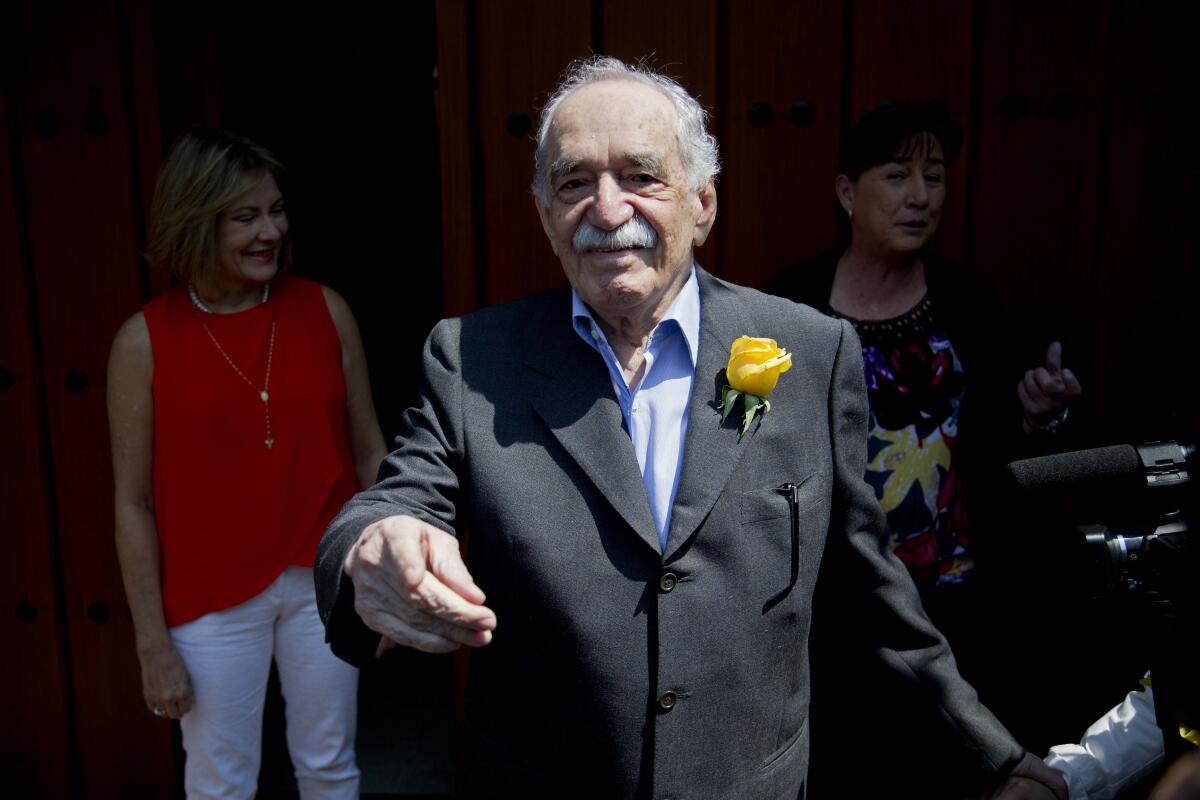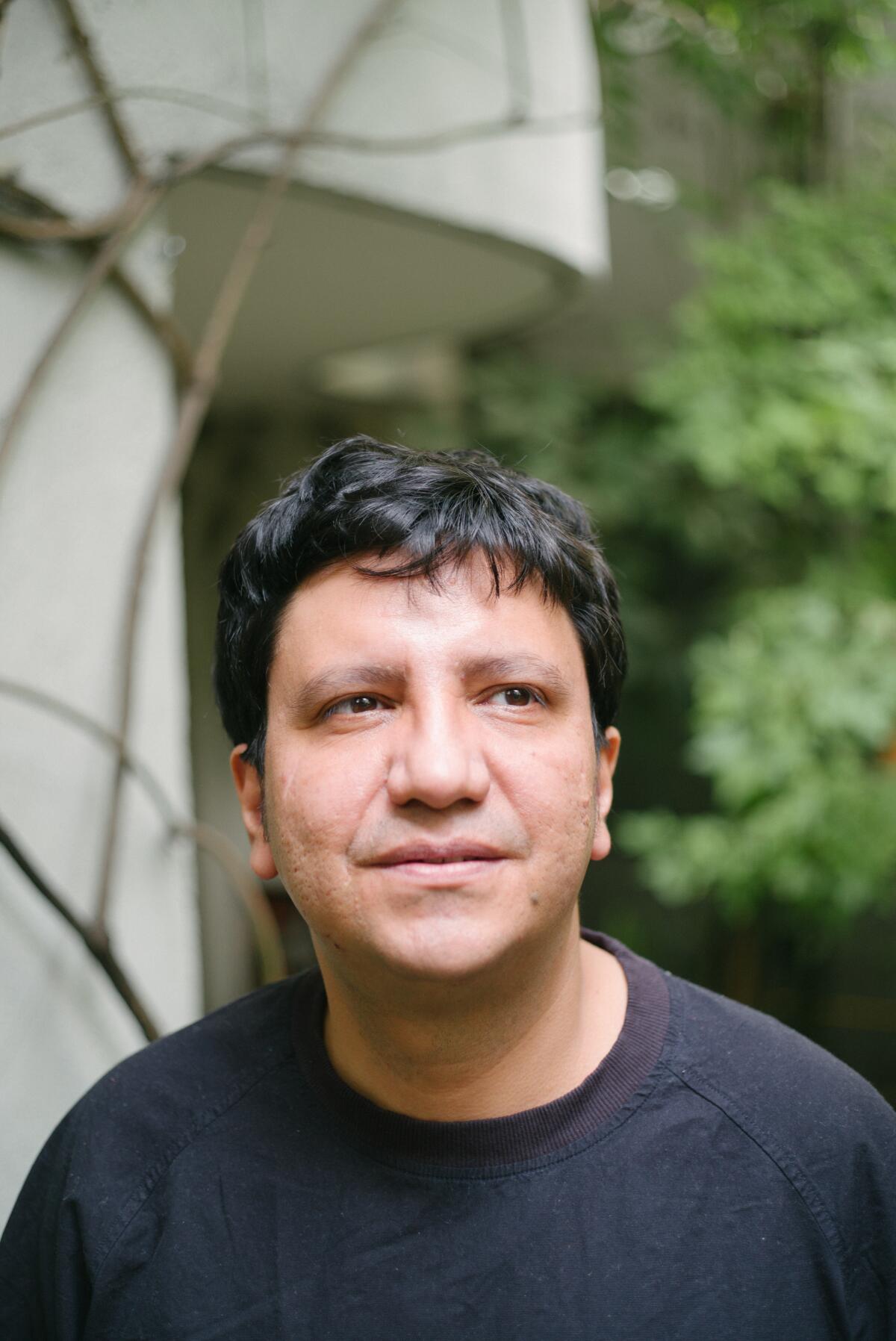Meet the translator turning American readers on to Latin American superstars

Are you an English-language reader of Latin American literature? Meet Megan McDowell, a translator working with literary stars.
- Share via
Good morning and welcome to the L.A. Times Book Club newsletter.
I’m Jim Ruland, a novelist and punk historian, and although I’m currently on vacation in Colombia, book lovers never take a holiday from reading! That’s why this week’s edition is focused on Latin American literature in translation.
Colombia’s most famous writer is Gabriel Garcia Marquez, whose 1967 masterpiece of magical realism, “One Hundred Years of Solitude,” helped foster an era known as the Latin American Boom that saw the rise of authors like Argentina’s Julio Cortázar, Mexico’s Carlos Fuentes and Peru’s Mario Vargas Llosa.
Now we’re seeing another surge of brilliant writing from Latin America, led by women authors tackling their countries’ dark histories of political and sexual violence. Much of it is being translated by one person.
Meet Megan McDowell. She has won the National Book Award for Translated Literature, the English PEN awards, two O. Henry Prizes and an Award in Literature from the American Academy of Arts and Letters. Just this year, she’s worked on a new edition of Alejandro Zambra’s short story collection “My Documents,” the first unabridged English translation of José Donoso’s “The Obscene Bird of Night” and Mariana Enriquez’s upcoming collection of short stories “A Sunny Place for Shady People.”
I reached out to McDowell to discuss her process and thoughts on translating.

You have long relationships with many of the writers you work with, and sometimes you see the work before it’s even published in Spanish. That must be a tremendous asset.
That’s happening more and more. With Alejandro Zambra I often see drafts of what he’s working on long before I start translating, and I always feel honored that he wants my input. I do think it helps for me to be involved earlier, because I can see the process, talk to the writers about what they’re doing, ask questions. The more collaborative it is, the better.
What’s your advice for English-language readers tackling your unabridged translation of “The Obscene Bird of Night?”
Be open to the experience. Don’t expect the different parts to fit together on a totally logical level — they do fit together, but in a nightmarish, intuitive way. Being an active reader with this novel means letting yourself be carried along on its current and being open to feeling what it inspires you to feel.
How do you approach a novel that is long, labyrinthine and grotesque but is much loved for being all of those things?
I wanted to get to know [Donoso], and two works were very helpful in that: Cecilia García-Huidobro’s collection of his diaries, and the absolutely stunning biography that his daughter Pilar wrote, called “Correr el tupido velo.” I wanted to get the most complete image of him as a person — he was a man full of contradictions who wore a lot of masks, and understanding that about him helped me move through the book a little better, since there’s a lot about this novel that’s tied to his own biography.
You’re reading Book Club
An exclusive look at what we’re reading, book club events and our latest author interviews.
You may occasionally receive promotional content from the Los Angeles Times.
It’s a colossus of Latin American literature, and I can see its influence on another vast, sprawling novel that you translated, Mariana Enriquez’s “Our Share of Night,” which was a finalist for the 2022 L.A. Times Book Prize. Do you see any similarities?
Absolutely, and Mariana herself has cited it as an influence, along with Ernesto Sabato’s “On Heroes and Tombs.” They both deal with dominant classes in Latin America who exert their power over people’s bodies and land with impunity. She also mentions the novel’s focus on monstrosity and decadence, which clearly apply to “Our Share of Night” as well. Both Donoso and Enriquez are writers who are unafraid to look demons — their own and society’s — in the face.
You’ve also translated a new collection of Enriquez’s stories. What can we expect from her new work?
Among other things, you’ll get a seedy hotel haunted by a girl who drowned in its water tank, bird-women and disappearing faces, a sinister small-town artist named Yolk, cursed designer clothes, a girl who loves to have sex with ghosts, a woman who sees the spirits of those who’ve died violently in her neighborhood, and polite little boys with all-black eyes who run like spiders.
You had me at “drowned in a water tank”! Was Elisa Lam’s mysterious death at L.A.’s Hotel Cecil an inspiration?
Yes, that story (the title story) does have to do with Elisa Lam’s case — the main character returns to L.A. after a long time away to investigate a cult trying to channel Elisa’s ghost on the Cecil’s roof.
Can you tell us what else you’re got in the pipeline?
Later this year, there’s Alejandro’s moving and endearing collection of stories and essays about fatherhood and son-hood, “Childish Literature” (Viking). Then there’s Samanta [Schweblin’s] new story collection, which will be called “First We Fall, Then We Feel” (Knopf). It is truly stunning. New Directions will be publishing my translation of Juan Emar’s short stories, “Ten.” Emar is a hilarious surrealist writer with a cult following in Chile, and “Ten” is from the 1930s but feels timeless. Then there’s another book by José Donoso called “The Mysterious Disappearance of the Marquise of Loria,” also with New Directions, which I’m working on now.
(Please note: The Times may earn a commission through links to Bookshop.org, whose fees support independent bookstores.)
Recent, new and forthcoming books with a Colombian connection

“Until August,” Gabriel García Marquez’s incomplete novel, was published in March, but not everyone is happy about it, including — presumably — its late author.
“Hombrecito” by Santiago Jose Sanchez, a coming-of-age story set in Colombia and the United States, was published earlier this week. You can read an excerpt at LitHub: “Mountains border the city on all sides. Their peaks slice open the clouds blown in from the Amazon and the Pacific, staining the city brown with rain.”
“Pink Slime” by Fernanda Trías, translated by Heather Cleary, hits the shelves next week and early reviews are oozing with praise: “Set in a dystopian port city in which the fish have died and birds have gone extinct, Trías’s novel is textured by sharp, bloodied images.”
Maria Ospina’s “Variations on the Body,” also translated by Cleary, consists of “six subtly connected stories” about the lives of women in contemporary Bogotá.
The Week(s) in Books

Paula L. Woods talks to five mystery writers about what they’re reading and writing. Can you guess who’s revisiting Marquez’s “One Hundred Years of Solitude” this summer?
Mike Madrid considers the political implications of the Latino vote — and what everyone gets wrong about it — in his forthcoming book “The Latino Century: How America’s Largest Minority Is Transforming Democracy.”
Jessica Ferri reviews Rachel Cusk’s new novel, “Parade,” which explores “the total destruction of the female self through art, inspired by real artists such as Louise Bourgeois and Paula Modersohn-Becker.”
Raha Rafii unpacks Cody Delistraty’s hybrid memoir “The Grief Cure: Looking for the End of Loss.” “What is most striking is the loneliness of Delistraty’s journey, and his seeming faith in the products of the very capitalist systems, such as the tech industry, that have standardized such loneliness.”
Latin American writers in the L.A. Times

Lisa Alvarez offers a reading guide to the life and work of Gabriel García Marquez. Her advice? “Start with the stories.”
Alejandro Zambra discusses the influence of Roberto Bolaño on his work with Dorany Pineda.
“I think of the novel as one of those people who visits you and you fill their glass every once in a while so they’ll never leave.”
The Times reviewed Samanta Schweblin’s novel “Little Eyes” in 2020 and her debut novel, “Fever Dream,” in 2017. Both of these eerie and unsettling books were translated by Megan McDowell and the latter has been made into a feature film.
Carolina A. Miranda explores Benjamín Labatut’s obsession with the color blue: “‘When We Cease to Understand the World’ is inspired by scientific history, but it is not a straight historical account. It is a novel.”
Thanks for reading! I’ll be back in two weeks with some books about baseball — just in time for the MLB All-Star break.
Sign up for our Book Club newsletter
Get the latest news, events and more from the Los Angeles Times Book Club, and help us get L.A. reading and talking.
You may occasionally receive promotional content from the Los Angeles Times.



